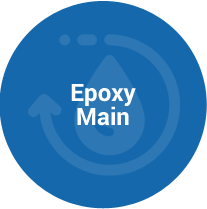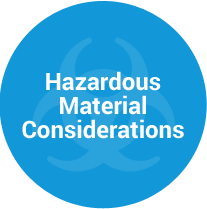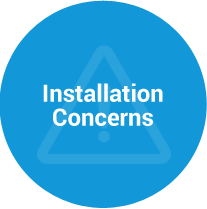Epoxy Lining is a general term for a variety of different plastic resins used on hot and cold water supply pipes, sprinkler lines, HVAC piping, gas lines and certain drain, waste and vent piping. The National Sanitation Foundation (NSF) and U.S. Environmental Protection Agency (EPA) have certified some epoxy linings for carrying potable drinking water. Epoxy resins are generally not certified as a “structural improvement” to the existing piping system.
Click on the icons below to read more about the concerns and challenges of epoxy pipe lining.
Performance and Maintenance Considerations
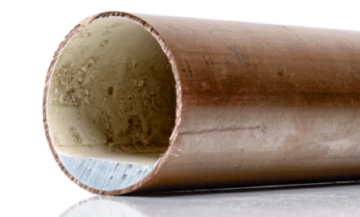
Coating Thickness
Epoxy coatings decrease the inside pipe diameter, and depending on the size of the pipe and installer experience, this reduction can be significant. Obviously, the larger the pipe diameter the less percentage loss in volume, but for smaller pipes, like those frequently found in domestic supply piping systems at multifamily properties, this loss can be significant. Buildings are engineered based on specific pipe diameters to ensure proper performance and compliance with plumbing code requirements, and altering the inside diameter of the pipe could have a negative impact on system performance as well as cause the piping system to fall below the standards established by applicable plumbing code.
Flow Impact
Poorly installed linings can result in bottom pooling, where the epoxy settles and creates a flat surface on the bottom of the pipe impacting how the water flows. This can cause a decrease in water volume and flow rate and an increase in turbulence. This may also result in a piping system that no longer meets the current plumbing code regarding pipe sizing.
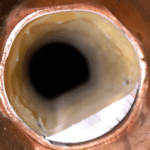
Future Repairs
The maintenance required on a lined piping system depends on the quality of the installation. If the lining is too thin, too thick, and uneven or does not coat the entire pipe, then there can be considerable maintenance requirements and potential for failure. Likewise, once lined, these pipes cannot be soldered with a torch, as the plastic resins used in the lining process cannot withstand the heat of a flame and melt, creating blockages that require replacement. Depending on the tenure of a community’s maintenance staff, they may not know the pipes have been lined, and may accidentally authorize an uninformed plumber to utilize a torch without understanding the implications. In a California lawsuit against one epoxy manufacturer, it was alleged that “workers used an open flame torch to open up plumbing lines serving a unit. The fire from the torch caught the building materials (epoxy) on fire, and as a result of the fire, several condominium units in the building were severely damaged.”12
The approved solution for performing maintenance on a lined water supply piping system is a mechanically formed joint, but with the amount of pressure sometimes required to achieve an adequate seal, there is a potential risk that the lining can crack, leaving portions of the pipe unprotected and loose epoxy in the system potentially causing clogs, delamination or loss of water pressure. With respect to water supply systems, it has been said that “the serviceability issue is not trivial. Homeowners must be comfortable with the idea that no further modifications, maintenance, or improvements can be made on their current potable water system.”13
Epoxy Lining Conclusions
The overwhelming amount of risk associated with epoxy lining, coupled with observations of failed installations and their consequences, has led the authors to conclude that epoxy lining pipes within the building envelope is not a comparable alternative to pipe replacement. Before making an investment decision, it is always advisable for a community to explore all its options, including a repipe, to ensure their property is making the most informed decision possible about fixing its leaking pipes.

